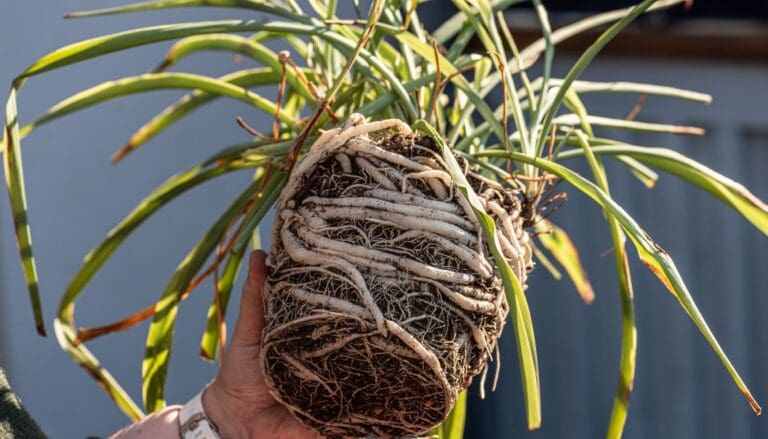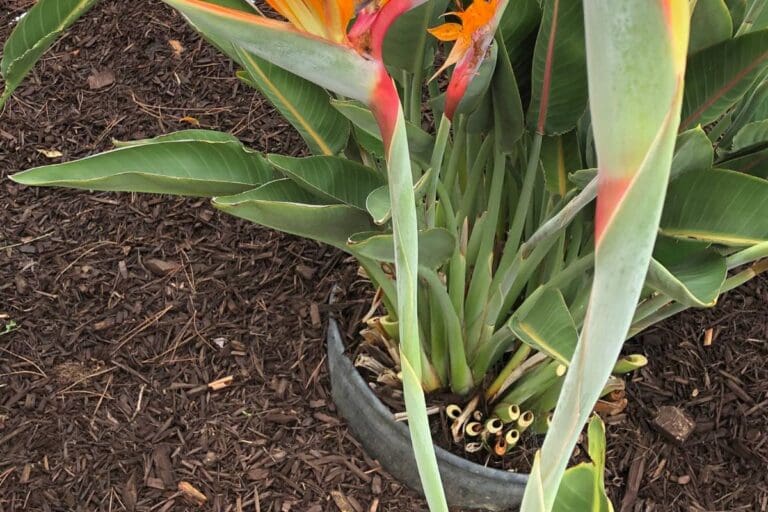How To Care For Philodendron? (Ultimate Care Guide)
Philodendrons are popular houseplants that are found in climbing and non-climbing variations. These houseplants have gained popularity in the houseplant community due to their unique foliage and low maintenance. If you are a beginner with houseplants and think philodendron could be an excellent plant to get started with, you have a heads up on that from us.
Although philodendrons require little care, you must look at the plant from time to time to make sure that it is doing well. If it is living in unsuitable conditions, you might see problems in these plants.
Philodendrons are hardy plants, so you won’t be able to kill them quickly. They can go a long way with little care and add life around the space where you decide to place the plant.
Philodendrons require bright and indirect light with temperatures between 65-80°F and about 60-70% humidity levels. You won’t need to water the plant frequently, but water thoroughly whenever you water them. Also, fertilize them with a balanced liquid fertilizer during the growing season.
This article will help you with everything you need to know about a philodendron plant, the ideal conditions, the common problems, and some care tips.
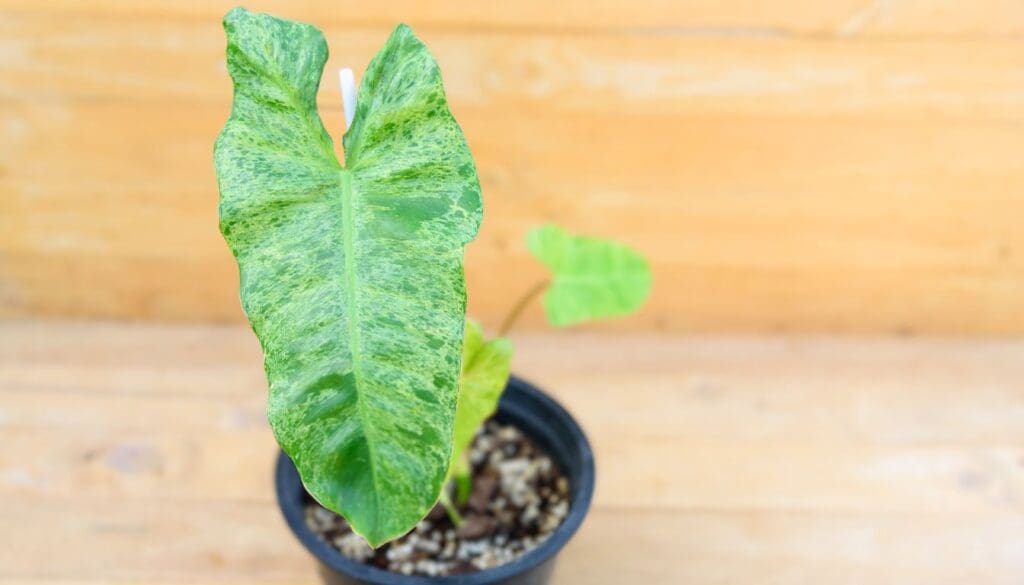
Please note: Simplify Plants is reader-supported. Some links in the post are affiliate links and I get a commission from purchases made through links in the post.
Philodendron Overview
Philodendrons are tropical plants that are native to tropical America. These belong to the Araceae family, and there are more than 450 species of philodendrons!
Philodendrons are loved for their unique foliage, and every species has something different about its leaves. You will find both non-climbing and vining varieties of philodendron. Vining philodendrons placed in hanging baskets can be great pieces of decor.
Let’s take a look at some of the common varieties of philodendrons.
- Heartleaf philodendron – A popular vining species that often gets confused with pothos. It is also called the sweetheart plant as it has heart-shaped leaves.
- Philodendron Xanadu – This is an upright variety of philodendrons that is seen in many households. It has large glossy split leaves with deep lobes.
- Blushing philodendron – Another popular variety of philodendrons that can be grown in hanging baskets as climbing plants. These come with dark green glossy foliage that has elongated arrow shapes.
- Philodendron Birkin – This is a variegated variety of philodendrons that have heart-shaped leaves with white pinstripes. These can even change the color that might differ from leaf to leaf.
- Philodendron Pink Princess – This is a beautiful species with green and pink variegated leaves. This is a vining species that can grow bushy with some pruning.
Are philodendrons easy to grow?
Philodendrons are very easy to grow as they don’t require a lot of care and can be grown quickly by both beginners and experts.
Some species of philodendrons can even survive low light conditions and might tolerate low temperatures better than some other species of plants.
These plants can’t grow well if you can just provide the right living conditions to them.
Is philodendron indoor or outdoor?
Philodendrons thrive indoors when they get proper conditions that support their growth.
You can take them outside and place them under shade when the conditions are suitable. But you cannot keep these plants under direct sunlight as that will cause sunburn.
You cannot expose these plants to frost and cold weather either, as both can be profoundly damaging for these plants. Therefore, it is best to say that philodendrons are indoor plants that thrive in a controlled environment.
Also read: Can I Put My Philodendron Outside? (When, How & More)
Philodendron care
Caring for the philodendron is easier than many other plants. Philodendrons are resilient plants that can survive a variety of conditions.
Even if you make any mistake with the philodendron, you will be able to revive it with some attention and care. It is a tolerant plant that gives its owners another reason to love it even more.
If you don’t have much idea about a philodendron plant, don’t worry, as we will cover everything in this article that will make caring for philodendrons much easier for you.
Before we get into the other details, let’s discuss the philodendron’s light, water, soil, and fertilizer requirements.
Also read: Philodendron Winter Care: Common Problems, Factors To Consider & More
Philodendron light requirements
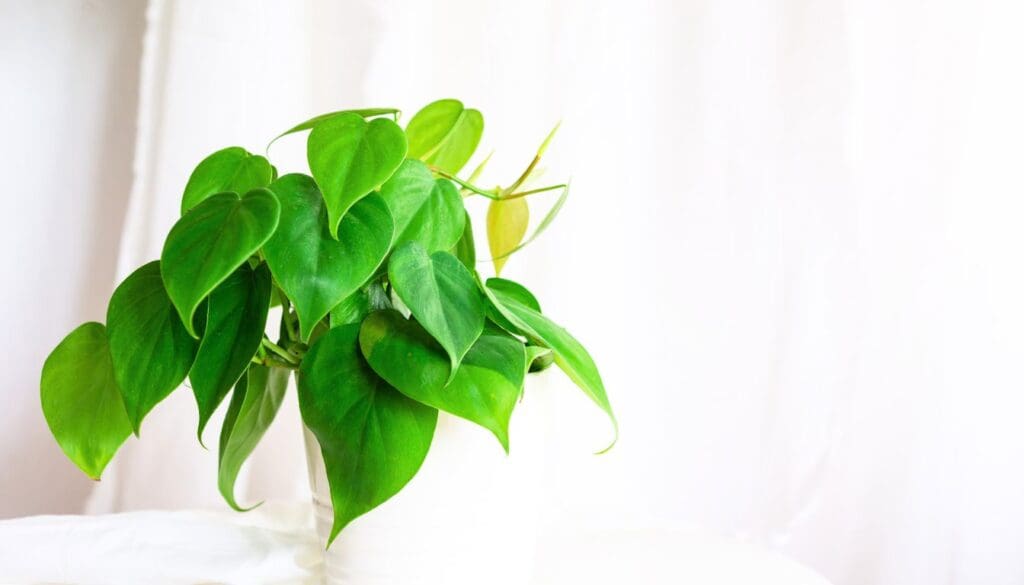
Philodendrons require medium to bright indirect sunlight. You’ll notice that the philodendrons grow fast and bushy when you give it the right lighting conditions.
Some species of philodendrons, like the popular heartleaf philodendrons, do well even in low light conditions. You might not see as much growth, but it will still do pretty well.
You must never expose the philodendrons to direct sunlight as their leaves will get scorched, and the plants will get sunburned.
You can rotate your philodendron to 45 degrees now and then so that it gets light on all sides. And you can use artificial lights if your philodendron is not getting enough light.
If you want to move the plant outside, you can do it only under favorable conditions and place it under a shade to protect it from the direct sun.
Also read: What Kind Of Light Does A Philodendron Need? (Light Requirements)
Philodendron water requirements
One great thing about vining philodendrons is that they can grow in both soil and water.
When you have a philodendron that grows in the soil, you must water when the top inch of the soil feels dry. Most of the time, philodendrons don’t like to sit in the water but enjoy slight moisture in the soil.
You must not let the soil get bone dry, and try to maintain a schedule where you check the soil before watering so that you can avoid both overwatering and underwatering.
Consider watering your philodendron once every ten days to begin with but don’t water without checking the soil.
The water requirement of your philodendron might depend on other external weather conditions so consider everything before coming up with a watering schedule.
For the philodendrons growing in water, you must check the water of the jar or vase as these plants absorb water very fast.
Consider changing the water often to keep the plant healthy and happy.
Also read: How Much Water Does A Philodendron Need? (Water Requirement+How Often)
Philodendron soil requirements
Philodendrons require well-draining soil that can also hold some moisture. The soil should also contain organic matters that will help to improve its texture.
You can prepare a rich potting mix and add some chunky elements to make the soil well-draining. A peat-based soil mix would be ideal for your philodendron.
The pH of the soil should be slightly acidic, between 5.0 and 6.0.
You can prepare potting soil by mixing:
- 1 part regular potting soil
- 1 part peat moss/cocopeat
- 1 part perlite/ coarse sand
Philodendron fertilizer needs
If you give fertilizers to your philodendron, you will notice more growth in it. The leaves will grow longer and look healthier.
You can use a well-balanced liquid fertilizer with a ratio of 20:20:20. It is best to fertilize the philodendron once every 15 to 30 days.
If you are using a commercial fertilizer, read the instructions carefully before giving it to your philodendron not to overfertilize it.
You can also switch to organic fertilizer and use eggshells, earthworm humus, or even water from the aquarium to fertilize the plant.
It is best to fertilize the philodendron during the growing season as the fertilizer can support its growth. But you must avoid fertilizing during the winter months as the plant remains dormant during that time.
You must not fertilize your philodendron if it is not doing well. If you can’t decide the correct dose, consider fertilizing with a smaller dose. You don’t want to overfertilize the plant.
Also read: What Kind Of Fertilizer For Philodendron? (Best Fertilizer+Fertilizer Ratio)
Philodendron temperature tolerance
Philodendrons come from the tropical forest region of America, where they experience a warm climate. These plants do best in temperatures between 65 to 80°F.
Philodendrons can tolerate low temperatures for a while, but an extended period of cold and frost will damage these plants.
You must protect the philodendrons from cold drafts and frost during winter and keep them in a controlled environment inside the house.
Also read: Can Philodendrons Get Sunburned? (+How To Fix)
Philodendron humidity requirements
Philodendrons might require more humidity than most of your other houseplants. This is because philodendrons come from tropical forests, where they receive a lot of humidity.
Try to maintain humidity levels between 60 and 70% to keep the leaves of your philodendron shiny and healthy.
If the humidity levels drop below 40%, the plant will have a hard time. You can use humidifiers, pebble trays, or mist the plant occasionally to increase the humidity.
You might relocate your philodendron to the kitchen or bathroom during the winter when the humidity level drops below average.
Also read: Do Philodendron Like To Be Misted? (+Ways To Boost Humidity)
Philodendron pruning needs
Although philodendrons might not need pruning for their growth, occasional pruning must not be skipped. Philodendrons can grow aggressively, and pruning helps to keep the plant in check. It keeps the plant in shape and stops the overgrowth.
However, you must prune the philodendron only when it is required. You can consider pruning if you see excess or leggy growth. The best time to prune your philodendron is during spring and fall.
Use sterilized and sharp garden shears to prune your philodendrons. If you have a diseased or damaged philodendron, you must prune the affected areas.
Philodendron’s sap can cause skin irritation, so you must use garden gloves while pruning or wash your hands well if you are not using gloves.
Also read: How To Trim Philodendron Plant?
Repotting philodendron

Philodendrons growing in water will not require repotting ever unless you decide to shift the plant to a pot. You might just need to change the water from time to time.
You must repot your philodendron when it becomes rootbound. A rootbound plant has roots that have outgrown the pot and don’t have space for further growth or proper functioning.
If the philodendron gets affected with root rot, it will again require repotting. You would need to prune the roots and damaged leaves or stems and repot the plant.
When repotting the philodendron, prepare a well-draining peat-based soil mix and get a new pot with drainage holes.
It is best to repot a philodendron in early spring. You can repot during other times of the year if necessary, but you must be careful as the plant can get shocked.
Water the plant thoroughly one day before you repot it so that it comes out of the pot quickly and water after repotting so that the soil settles in and reduces the plant’s stress.
If you repotted a plant affected by root rot, cut back on fertilizing and let the plant recover before fertilizing it again.
Also read: When Should I Repot My Philodendron?
Philodendron propagation
You can propagate your philodendron to get new plants out of it or if it is dying due to any disease.
Propagating a philodendron is very easy. You can propagate it in both soil and water.
First of all, you need to get healthy cuttings from your existing philodendron plant. Use disinfected sharp pruners and made clean cuts on the stem that you want to propagate.
Ensure that the cutting includes at least one node. Next, you can place the cutting in a small pot with soil or a jar of water.
Do not propagate unhealthy cuttings as such propagation will not be successful in the long run.
Wait for the roots to grow. If you are propagating in water, you can keep the plant in water permanently and let it grow in there or take it out after the roots have grown a little big and plant it in a pot.
Also read: How To Propagate Philodendron? (Soil And Water Propagation)
Philodendron in water
Vining philodendrons can grow in water. You can take one or more healthy cuttings and place them inside a glass jar filled with clean water when propagating the philodendron or pruning it.
You might need to help these plants initially with a pole or wall hooks to help them climb and grow.
Make sure that the water is non-chlorinated and clean as the philodendron would be growing in the water. You can add very little liquid fertilizer to the water whenever you change it, as the plant will get all nutrients from the water.
Provide the ideal living conditions that will help the plant grow well in water. You must not select a very young or an old cutting to grow in the water.
After you propagate a philodendron in water, it might take anything between two to three weeks to see root growth. Soon after, you will notice new leaves.
However, if you don’t see roots coming out, the propagation might have been unsuccessful.
Also read: Can Philodendron Grow In Water? (How To+Care)
Philodendron toxicity
Philodendrons are toxic for both humans and animals. If you have pets or children in the house, you must find a way to keep this plant away from them.
Philodendrons contain toxicity in their sap which flows all around the plant. This makes all parts of the plant toxic. If your pets consume any part of the plant, it can develop a lot of issues. You need to take your pet to the vet immediately in such a case.
However, it is best to keep the plant beyond the reach of the pets to be on the safe side. You can use hanging baskets or keep the plant on a high shelf.
Use gloves while pruning, repotting, or propagating the plant to prevent the sap from getting on your skin and cause skin irritation.
Also read: Are Philodendron Plants Poisonous To Pets? (Cats, Dogs, Birds & More)
Philodendron pests
Pests such as aphids, spider mites, scales, or mealybugs can attack your philodendron. Philodendrons can attract pests if they live in unfavorable conditions or are near another plant with a pest infestation.
Pests can cause heavy damage to your philodendron if not treated on time. These pests populate very fast and can take over your plant in no time.
Pests feed on the sap of the philodendron that carries nutrients to different parts of the plant. Pests such nutrients out of the stems, thus making the plant weak and vulnerable.
Pests will thrive if you overwater the philodendron and keep it in soggy soil for long or do not provide sufficient light.
To get rid of the pests, wash the plant thoroughly and spray neem oil solution on it. Continue this for at least two weeks, and then check the plant to find out if it has pests.
You can also spray neem oil to keep the pests away even if the philodendron doesn’t have an infestation.
Also read: How Do I Get Rid Of Bugs On My Philodendron? (+Bug Identification)
Philodendron problems
Philodendrons are hardy plants, and it can be tough to kill these plants, but that doesn’t mean that these plants don’t have problems.
Philodendrons can develop different problems if you overwater or overfertilize them. Temperature fluctuations or using the wrong pot can also lead to various problems in the philodendron.
Philodendron leaves turning yellow
Your philodendron is facing problems if you notice that the plant has yellow leaves on it. Yellow leaves might be a sign of too much sunlight, improper watering, etc.
If the philodendron roots remain wet for too long due to overwatering and soggy soil, the roots will fail to function correctly, and the plant will not be able to produce enough food or energy to sustain itself, due to which the leaves can turn yellow.
You must not water more than once a week or once every ten days and water only if the top inch of the soil feels dry after you touch it.
Check the soil to make sure that it is well-draining. If not, your philodendron will require repotting in well-draining soil. The pot should have working drainage holes to drain out the excess water.
Do not keep the philodendron in too much light to discolor the leaves and make them yellow.
Also read: Why Is My Philodendron Turning Yellow? (Causes+How To Fix)
Philodendron leaves turning brown

You might notice brown spots on the beautiful leaves of your philodendron, or the whole leaf might be turning brown. Some common reasons behind brown spots on philodendrons are overwatering, direct sunlight, and overfertilization.
Avoid placing your philodendron under direct sunlight as these plants cannot tolerate the direct sun. Direct sunlight can be too harsh for these plants and can burn the leaves, due to which you will see crisp brown spots on the leaves.
You might notice different types of browning on your philodendron leaves – brown tips, brown edges, brown spots, or a whole brown leaf!
Overwatering can cause all sorts of browning for your philodendron plants. You must not follow any watering schedule blindly and water only when the top layers of the soil feel dry.
Always remember: It is better to fertilize less than to overfertilize the plant. Overfertilization can make the tips of your philodendron leaves go brown. So if you are doubtful about the amount of fertilizer to give to your philodendron, give it less to avoid overfertilization.
Make sure to prune the brown leaves as these will not become healthy again.
Also read: Why Is My Philodendron Turning Brown? (Causes+How To Fix)
Philodendron leaves curling
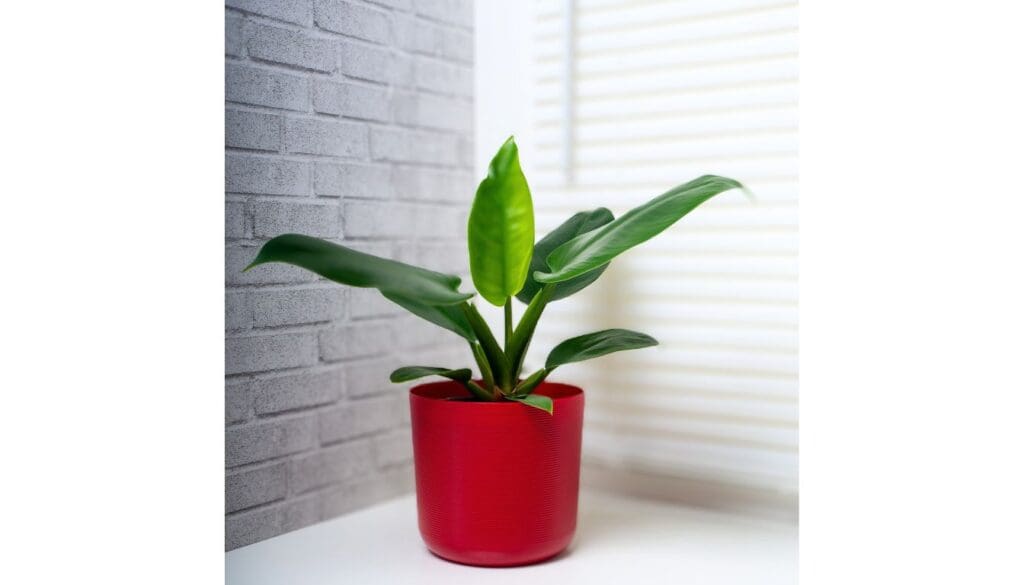
The main reasons behind curling leaves in your philodendron include dry soil, temperature fluctuations, or poor quality water.
Philodendrons prefer slightly moist soil. They don’t prefer dry soil, which is why you must not let the soil get bone dry. If the soil gets extremely dry, the roots will not absorb water or nutrients from the soil.
The plant will become weak, due to which the leaves will start to curl. You must not let the soil get very dry as that will dehydrate the plant.
Temperature fluctuations can stress the plant causing the leaves to curl. You must not expose your plant to temperature fluctuations and keep it in a controlled environment to avoid the curling of leaves.
Keep the philodendron away from cold drafts and frost during winter and keep it away from heating vents and the air coming from the Aircon.
Also read: Why Are My Philodendron Leaves Curling? (Causes+How To Fix)
Philodendron leaves have white spots
A pest infestation, fungal infections, low light, poor water quality, etc., can cause white spots on your philodendron leaves.
Pests such as mealybugs love to feed on tropical plants. They excrete a cotton-like white substance on the leaves of your philodendron. Spider mites can also attack your philodendron and leave a whitish tint on the leaves. Some other pests like aphids and thrips can also cause white spots on the leaves.
Use a neem oil solution and spray it on the philodendron to get rid of the pests. Isolate it from other plants so that the infection doesn’t spread.
Fungus infections like powdery mildew and leaf spot disease can leave white spots on the philodendron leaves. You can add some baking soda to water and apply this mixture to the affected areas to treat fungal infections. You can prune the affected areas also.
Another reason behind white spots can be poor water quality. Don’t use chlorinated water or water that contains other minerals not suitable for the plant. It will make the leaves discolored and white.
It would be best to use rainwater or filtered water to water the philodendron.
Also, the philodendrons might not do very well in low temperatures. They can tolerate low temperatures for some time, but if you keep them in low temperatures for a long time, the leaves will develop white spots.
Also read: Why Does My Philodendron Have White Spots? (Causes+How To Fix)
Philodendron leaves falling off
Philodendron losing leaves is not at all a good sign. While it is acceptable for the plant to shed old leaves, falling of young or mature leaves indicates something is wrong.
Some reasons behind the philodendron losing its leaves can be improper lighting, incorrect watering, or pest infestation.
Direct sunlight can cause severe damage to the leaves by making them dry, crisp, and discolored. These leaves eventually fall off. You must find a spot where the philodendron doesn’t get direct sunlight.
Even low light for an extended period can lead to falling leaves. Some species of philodendron can do well in low light, but not all of them can, so try to provide at least a few hours of bright to medium indirect light to these plants.
If you underwater the philodendron for longer than usual, the plant will lose leaves due to lack of energy. It will fail to produce any energy due to a lack of water and nutrients.
On the other hand, overwatering will lead to root rot, creating an unhealthy condition for the plant, and the roots will fail to function. The leaves will fall because of this.
A severe pest infestation can also result in falling leaves. You must treat your philodendron with a neem oil solution to eliminate the pests. You can also use this to prevent pest infestation.
Also read: Why Are My Philodendron Leaves Falling Off? (Causes+How To Fix)
Root rot in philodendron
Overwatering, poor drainage systems, and low light are common reasons behind philodendron root rot.
You must water the philodendron only when the top inch of the soil has dried up. Keeping the plant in soggy soil will not be suitable for the philodendron and lead to root rot.
If your philodendron already has root rot, you must prune the damaged roots and repot them in a fresh soil mix. The pot should have suitable drainage holes.
Place the repotted plant in bright indirect light and let it recover.
Also read: How Do You Fix Root Rot On A Philodendron? (Signs, Causes+Solution)
My philodendron is leggy
Philodendrons don’t get leggy quickly, but if the plant is not getting any light, it can get leggy. Lack of pruning or improper fertilization can also make the philodendron leggy.
A leggy philodendron will grow slender stems with very few leaves on them.
If your philodendron is getting leggy, you need to prune the leggy growth. Place the philodendron in a spot that gets sufficient indirect light.
Fertilize with a well-balanced liquid fertilizer during the growing season and don’t expose the plant to temperature fluctuations.
Also read: Why Is My Philodendron Leggy? (Causes+How To Fix)
My philodendron is drooping

Various reasons can make the leaves of your philodendron droopy. When a philodendron is living in unfavorable conditions, it becomes droopy.
If you care for the philodendron the correct way, you can save it from becoming droopy.
Some common reasons behind a droopy philodendron include low humidity, pest infestation, low light, watering issues, using the wrong soil mix, etc.
Water the philodendron after checking its soil, provide sufficient indirect light, spray neem oil to eliminate and prevent pests, and use a humidifier if the humidity is too low for the plant.
Also read: Why Is My Philodendron Drooping? (Causes+How To Fix)
Tips for caring for the philodendron
Here is a sum-up of the basics that will help you to keep your philodendron happy and thriving.
Light: Philodendrons do well in medium to bright indirect sunlight. Some species of philodendrons do exceptionally well in low light. Do not expose these plants to direct sunlight.
Water: Water the philodendron once every ten days or once a week, depending on the plant’s requirements. Do not water without making sure that the top inch of the soil is dry.
Soil: A well-draining soil that contains nutrients for the philodendron will work the best. Get a peat-based soil mix and add organic matter to it.
Fertilizer: A well-balanced 20:20:20 fertilizer will provide all the required nutrients to the philodendron. If you are unsure of the quantity, consider giving less fertilizer to the plant.
Temperature: Philodendrons require temperatures between 65 to 80°F.
Humidity: Philodendrons are tropical plants that prefer at least 60-70% humidity and can face challenges if the humidity levels drop lower than 40%. You can increase the humidity by grouping the plant with other humidity-loving plants; or a pebble tray or humidifier.
Repotting: Repot the philodendron every few years. It can get rootbound very fast because it is a fast-growing plant. You must also repot it if there is root rot or any fungal or bacterial disease.
Pruning:
- Prune the philodendron only when required.
- Prune it if it has overgrowth or if you need to get rid of damaged and dead parts.
- Use sterilized and sharp tools while pruning your philodendron.
Propagation: You can propagate your philodendron in both water and soil. If you propagate it in water, you can leave it there to grow permanently in water. You can also propagate it in soil and place it in a bright spot for faster growth.
Also read: 10 Tips For Growing Philodendron (Most People Miss No.6)
FAQ
Do philodendrons purify the air?
Yes, philodendrons are considered to purify the air. However, you must not keep it within reach of your children or pets as these plants are toxic. Find a safe spot for the philodendron so that both the plant and your pets and children stay unharmed.
Should I mist my philodendron?
Many philodendrons can tolerate low humidity, and there are many other ways to increase the humidity other than misting. But misting helps to keep the leaves clean and shiny. That gives you a reason to mist your philodendrons.
Do philodendrons grow fast?
Yes, philodendrons are fast-growing plants, and they grow best in springtime. If it is not growing well, you can prune the plant and keep it under adequate indirect light. You can check the plant thoroughly to find out if something is wrong with your plant.
Also read: How Fast Do Philodendrons Grow? (+How To Grow The Faster)
Ref: Wikipedia.
Recommended Garden Supplies
| Product Image | Our Recommended Gardening Supplies | Check Offers! |
|---|---|---|
Top Top
Top
Top
Top
Top
Top
Top
Top | rePotme Houseplant and Tropical Classic Potting Soil Mix | Check Offer On Amazon |
 Top
Top
Top
Top
Top
Top
Top
Top | Espoma Organic Indoor Plant Food | Check Offer On Amazon |
 Top
Top
Top
Top
Top
Top
Top
Top | GooingTop LED Grow Light 6000K Full Spectrum Clip Plant Growing Lamp | Check Offer On Amazon |
 Top
Top
Top
Top
Top
Top
Top
Top | Soil Moisture Meter | Check Offer On Amazon |
 Top
Top
Top
Top
Top
Top
Top
Top | Govee Hygrometer Thermometer, Bluetooth Enabled! | Check Offer On Amazon |
 Top
Top | LEVOIT Humidifiers for Large Room(Best For Plants) | Check Offer On Amazon |
 Top
Top
Top
Top
Top
Top
Top
Top | Upgraded DIY Automatic Drip Irrigation Kit, 15 Potted Houseplants Support | Check Offer On Amazon |
 Top
Top
Top
Top
Top
Top
Top
Top | Stainless Steel Heavy Duty Gardening Tool Set | Check Offer On Amazon |
 Top
Top
Top
Top
Top
Top
Top
Top | Bonide Insecticidal Soap | Check Offer On Amazon |
 Top
Top
Top
Top
Top
Top
Top
Top | Bonide 32 oz Spray Neem Oil for Organic Gardening | Check Offer On Amazon |
 Top
Top
Top
Top
Top
Top
Top
Top | Garden Safe Fungicide | Check Offer On Amazon |



